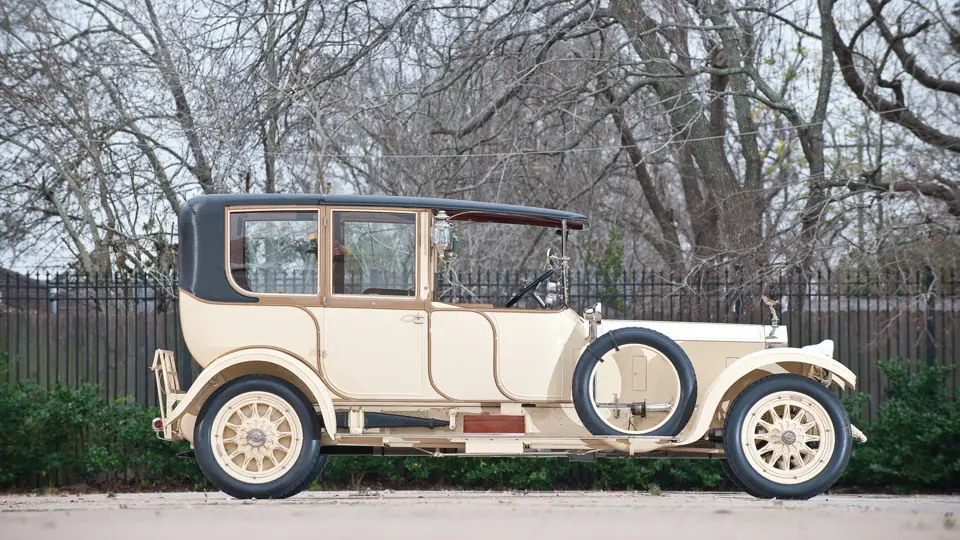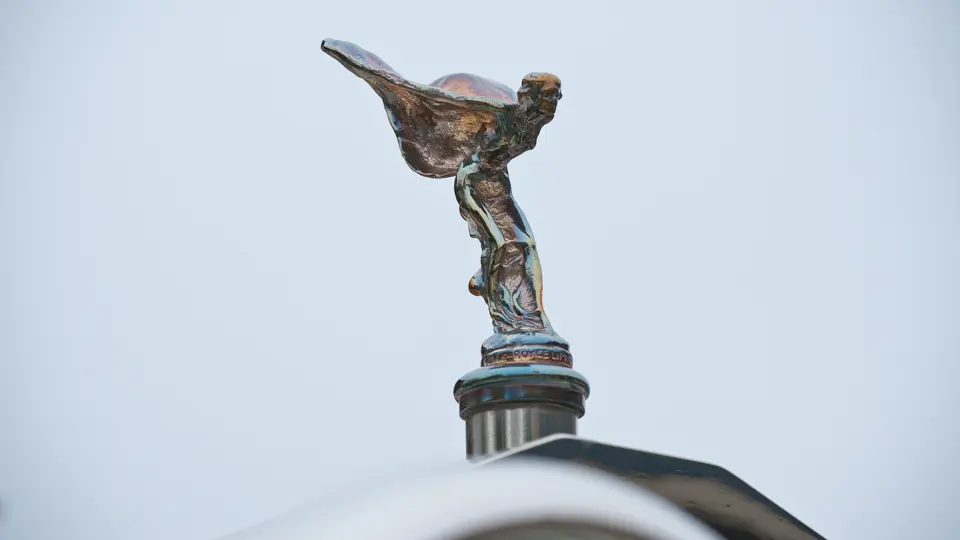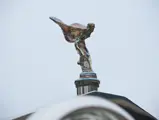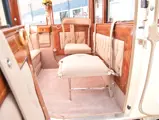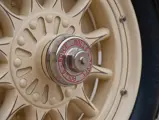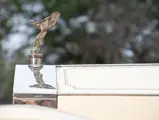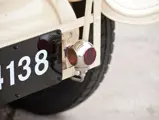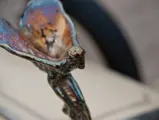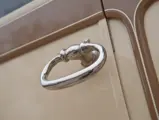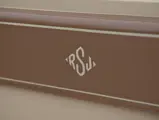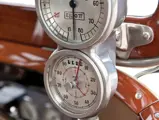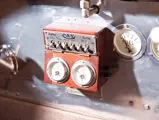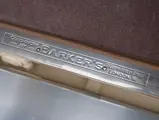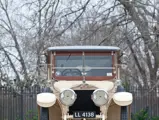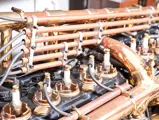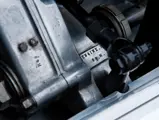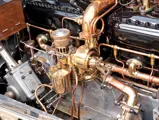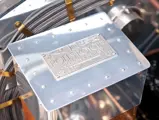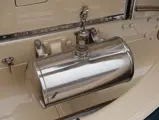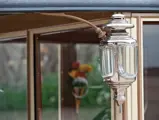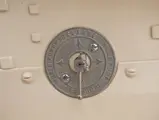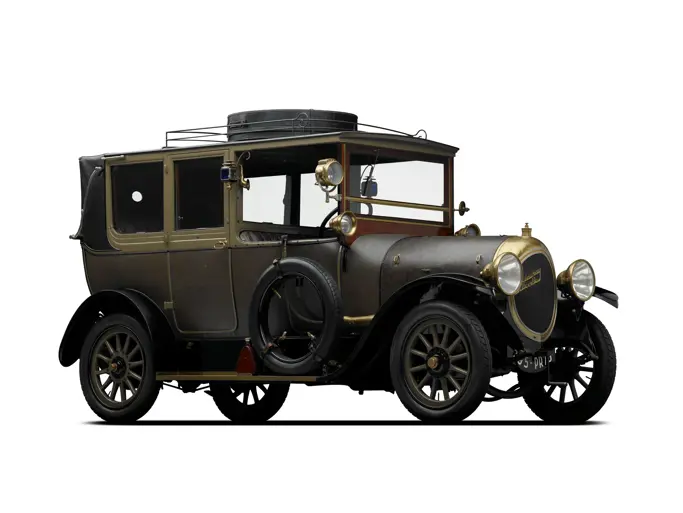40/50 hp, 7,428 cc L-head inline six-cylinder engine with cylinders cast in two blocks, three-speed manual gearbox, live front axle with semi-elliptic leaf springs, live axle rear with cantilever leaf springs, and two-wheel mechanical brakes. Wheelbase: 143.5"
• Offered from the Estate of John O'Quinn
• Provenance including Henry Ford Museum, Ben Moser and Richard Solove
• Original body, chassis and engine; documented in The Edwardian Rolls-Royce
• Beautifully restored by noted Rolls-Royce marque expert Steve Littin
The legendary Rolls-Royce model first introduced in 1906 was not initially referred to as the “Silver Ghost” but rather the 40/50, referring to its 40 taxable and 50 true horsepower output. The first 40/50 to bear the name Silver Ghost was actually the 13th chassis of the series built and featured an aluminum body by Barker with silver-plated exterior fittings and a sliver-plated brass plate bearing the name “Silver Ghost.” The dramatic name stuck, and Silver Ghosts became known not only for their incredible reliability but also for their virtual silence and uncannily smooth, almost vibration-free operation.
The aforementioned 13th chassis became a demonstration car for Rolls-Royce, and it was first put to the test in a 2,000-mile trial under the supervision of the Royal Automobile Club. During this test, the car recorded fuel economy better than 20 mpg on the road between London and Glasgow—quite astounding considering the size of the vehicle with such a large displacement engine (7,036 cc). Next, the car entered the Scottish Reliability Trials. Unfortunately, the Rolls had to make an unscheduled stop at 629 miles caused by a faulty petrol tap shaking shut. The car continued to run flawlessly day and night following the trials, resting only on Sundays, until 15,000 miles had been covered; thus, 14,371 miles were travelled without an involuntary stop, setting a new world record. The car was then dismantled under the supervision of the R.A.C., with all parts reported “as new.” In short, a Silver Ghost simply did not wear out, especially when compared to its contemporaries, and it went on to become one of the longest-running automotive models until it was succeeded by the Phantom, with production spanning 1906 to 1925 in England and American production continuing until 1926 in Springfield, Massachusetts.
This Silver Ghost, the elegant and handsome Barker-bodied Landaulette offered here, chassis 25EB, is the last of the B-Series Silver Ghosts. The chassis was “on test” on January 28, 1914, and once complete the car was delivered to its first owner, D.E. Cameron Rose, on May 28, 1914, registered LL 4138. Robert W. Schuette, the U.S. Rolls-Royce distributor and an agent for Barker Coachworks, imported 25EB to the United States and sold it to Miss Helen Brice of New York City. Subsequent history is unknown until 1959 when 25EB joined the renowned Henry Ford Museum collection in Dearborn, Michigan. Remaining quite original except for a single exterior refinish in the original Burgundy, 25EB was acquired by the California-based collector and enthusiast B. Paul (Ben) Moser in 1971. Following the death of Mr. Moser, his remarkable classic automobile collection was sold, including 25EB, which was acquired by Chris Lambert, quickly passing to Denean Stafford III. Under the next owner, Jonathan Proctor, the coachwork was refinished in Burgundy, and the rear-opening Landaulette roof was modified to a closed configuration, the roof reupholstered as well, with this work representing a minor and easily reversed modification, according to Rolls-Royce restoration experts.
Next, 25EB was acquired by Mike Ciera and exported to the United States, where it later joined the early Rolls-Royce collection of the late Richard Solove, who commissioned Steve Littin of Vintage and Auto Rebuilds, Inc. to perform the car’s first restoration, which was completed in 2004-2005. The body was removed from the chassis, and as related by Mr. Littin, the structural woodwork was sound and just one piece of wood needed replacement. He also stated that it was a simple operation to return the rear roof to its original opening configuration, with all the original catches and hinges acquired from early Rolls-Royce expert John Fasal, the author of the definitive Edwardian Silver Ghost. All the inlaid wooden interior panels are original to the car, the wood-spoke wheels are original, and only some very light engine work was required. In fact, according to Mr. Littin, the only major restorative work involved the car’s refinish in cream and the upholstery. Following the passing of Mr. Solove, 25EB was sold in the summer of 2007.
Beautifully presented in its original Landaulette configuration, 25EB is equipped with CAV electric lighting, a “double Elliott” speedometer, dual side-mounted spare tires and a rear luggage rack. The chauffeur’s area is trimmed in tan leather, while the opulent passenger compartment features privacy curtains, silk window pulls, beautifully inlaid wood, a secretary and vanity. The highly detailed engine and engine compartment are equally impressive. Documented in John Fasal’s The Edwardian Rolls-Royce and depicted during its earlier life in John Webb de Campi’s Rolls-Royce in America, 25EB retains its matching body, chassis and engine and a distinguished and well-known provenance commensurate with its desirability and impeccable quality.
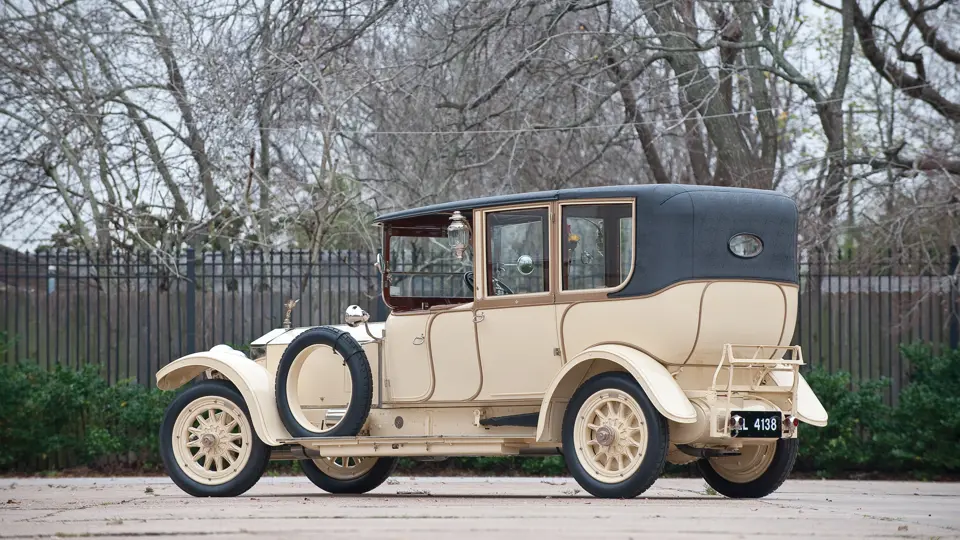
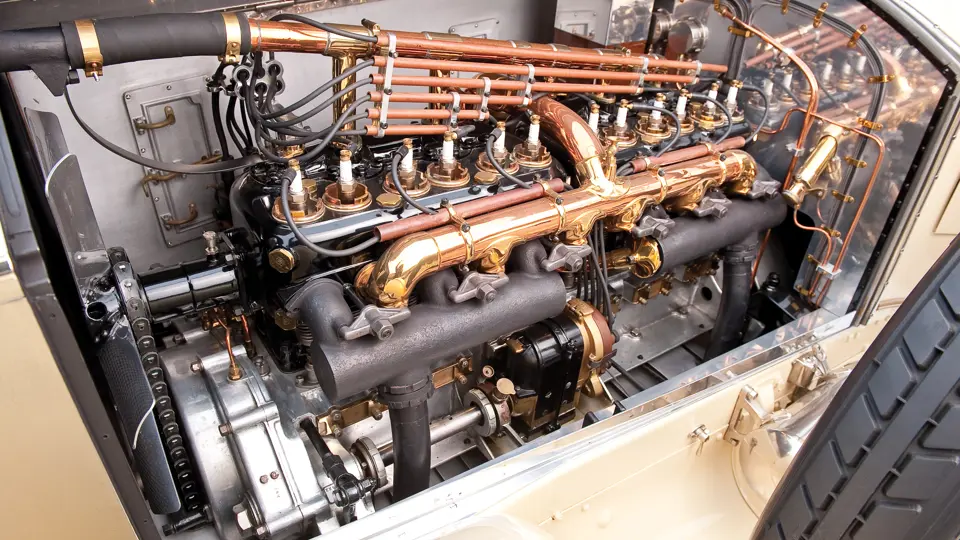


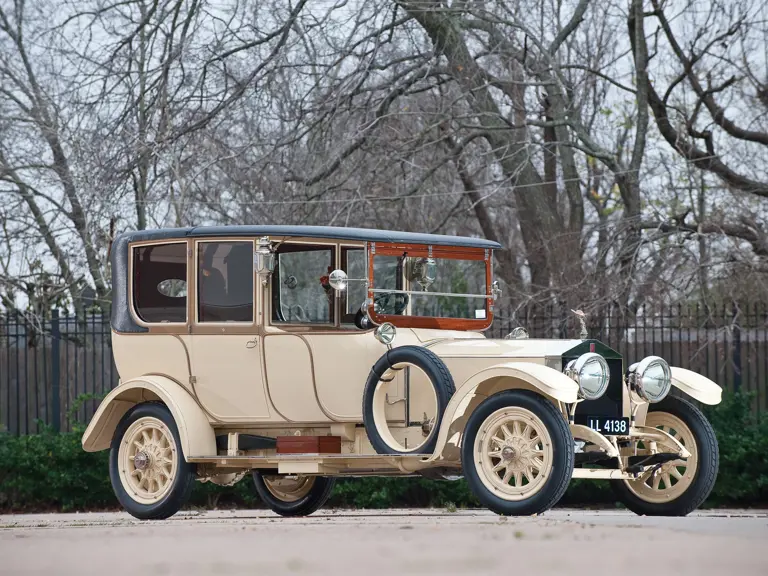
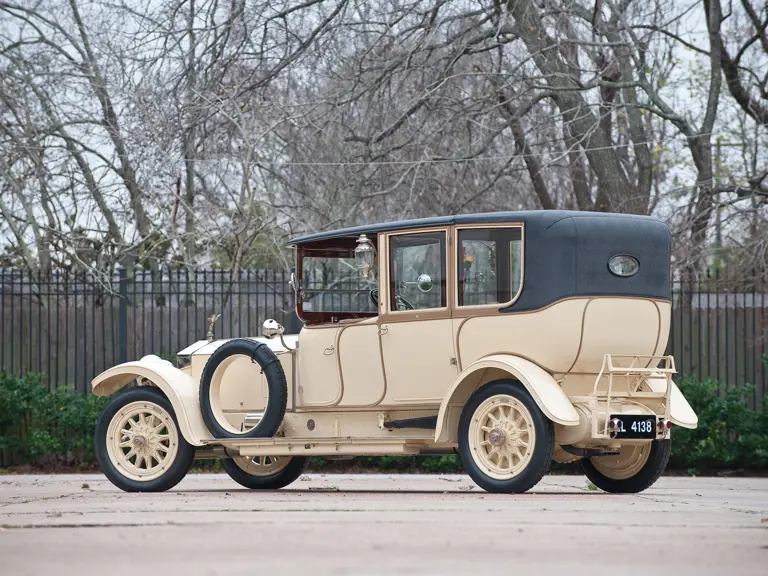
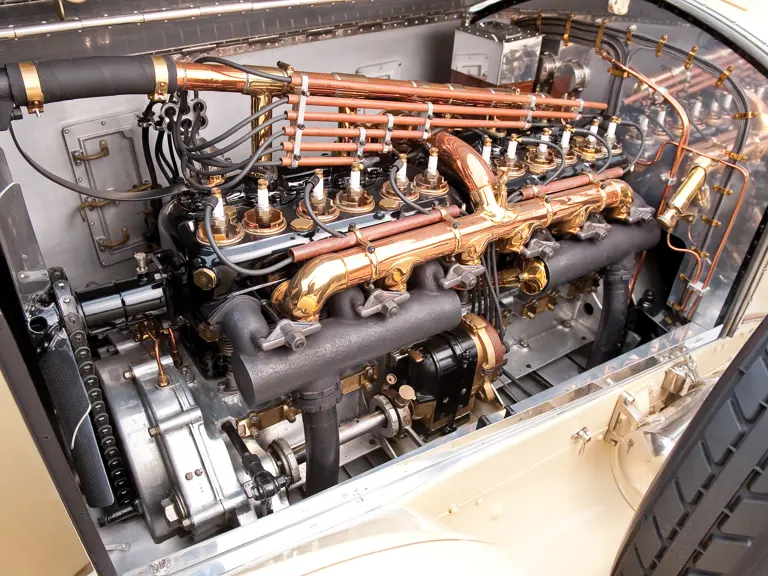


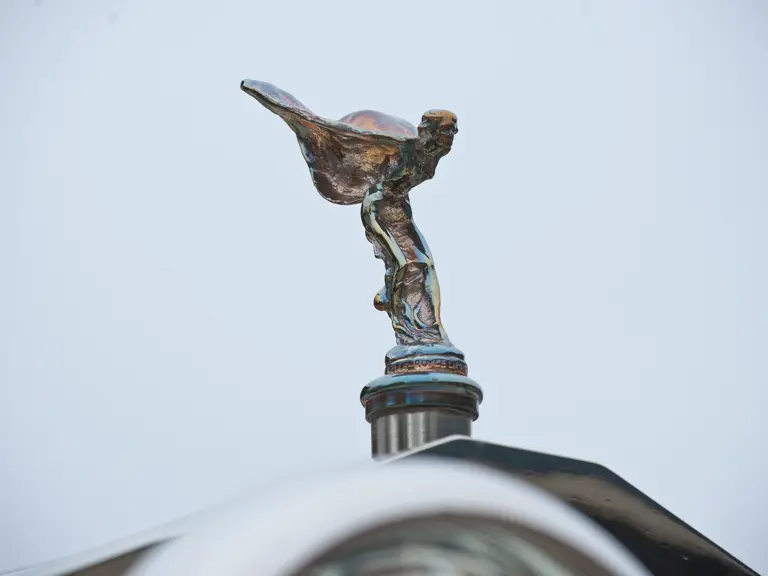
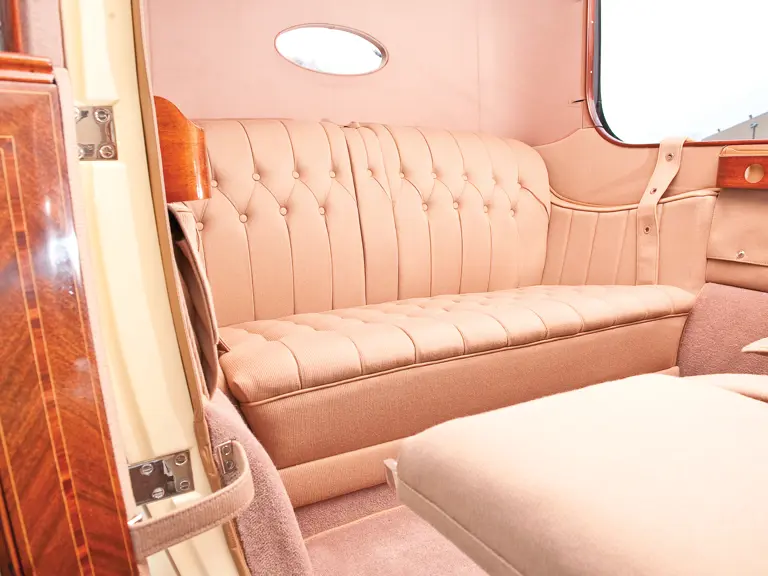
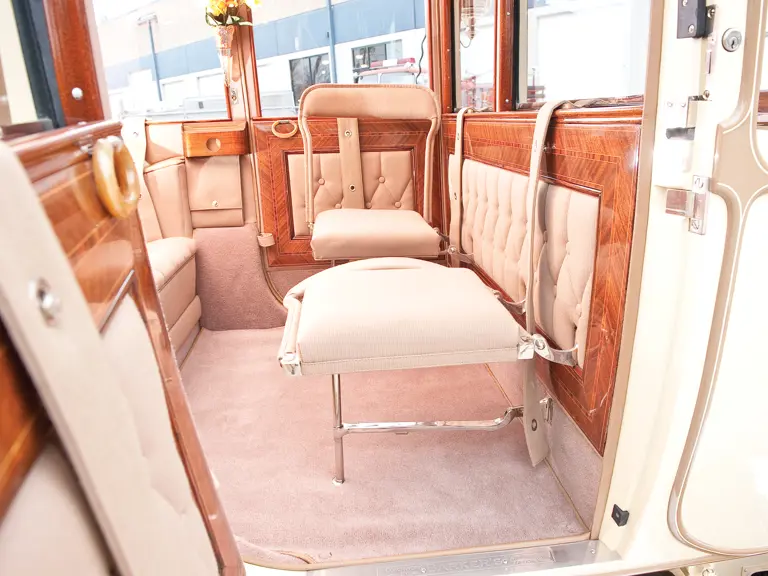
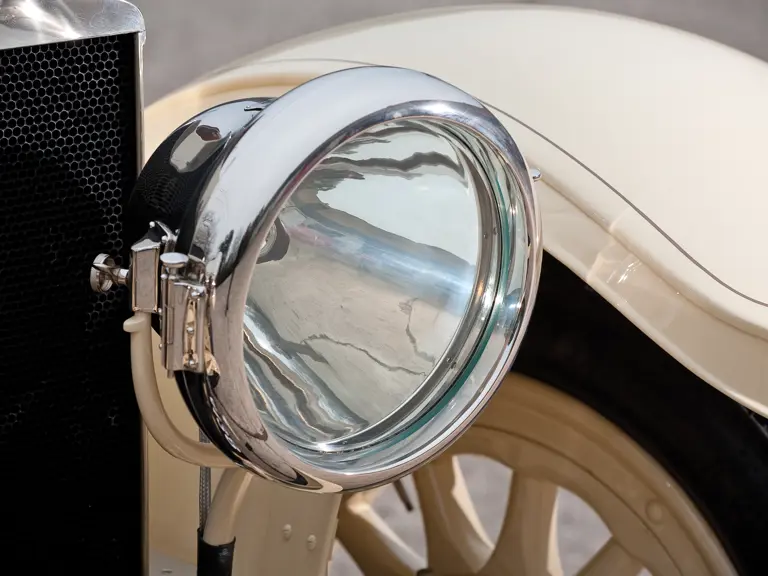
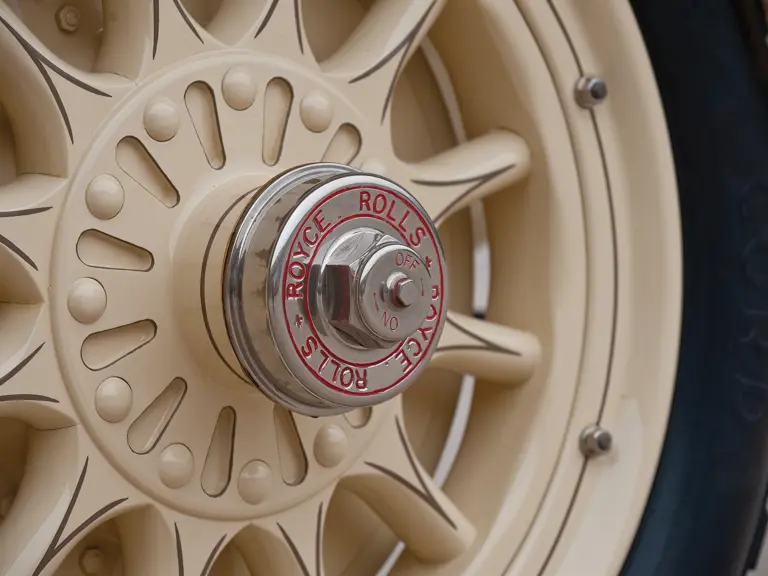

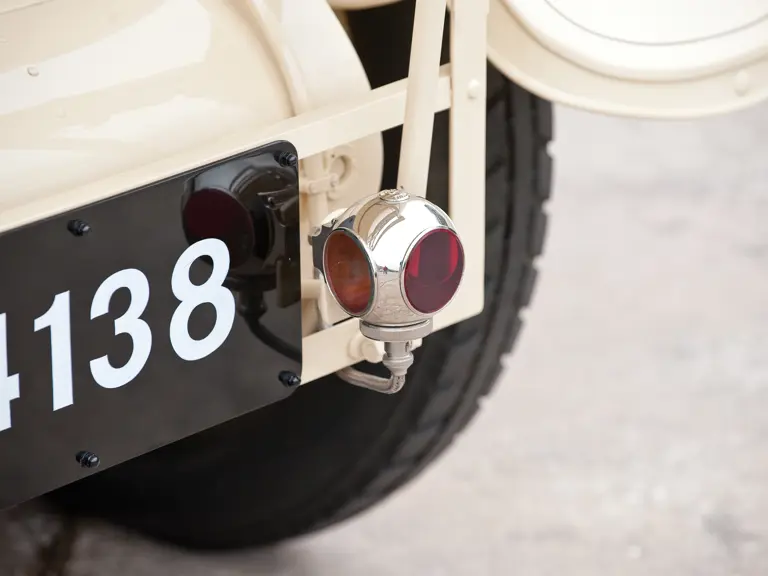
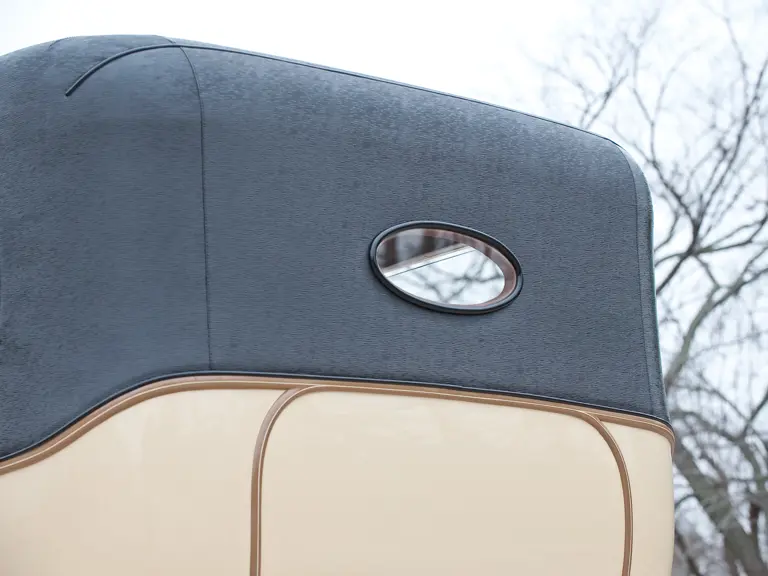

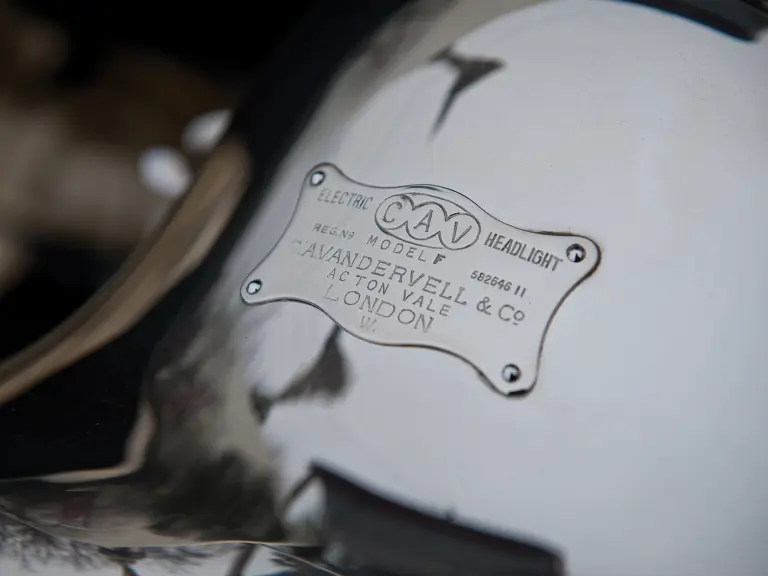
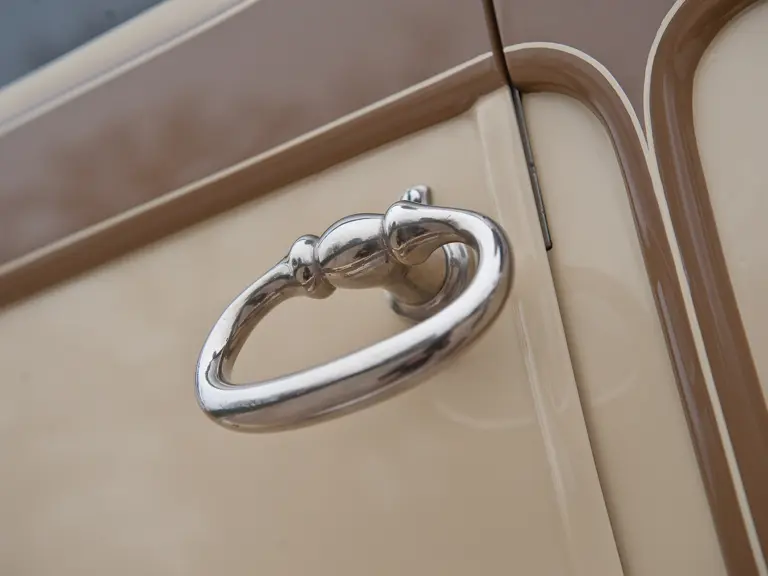

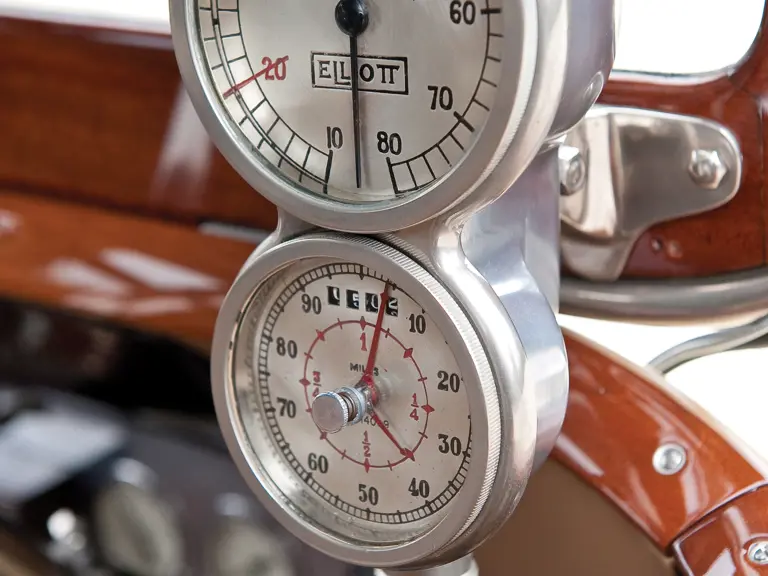
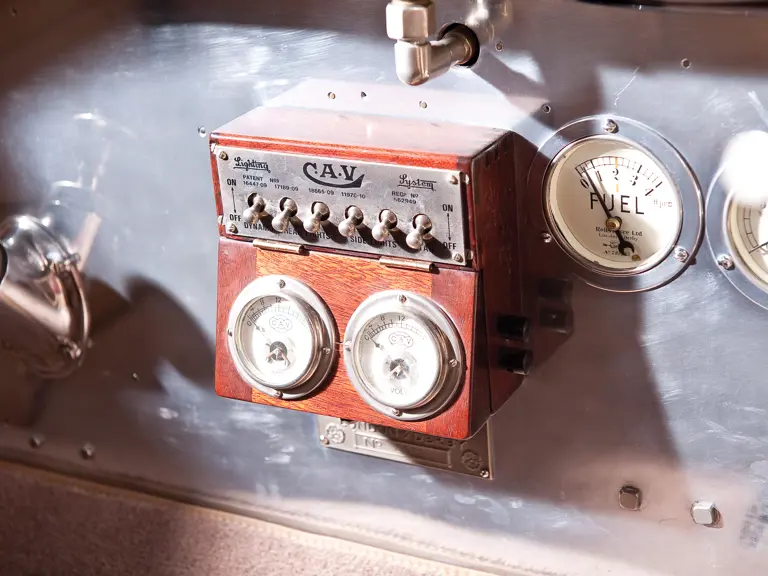
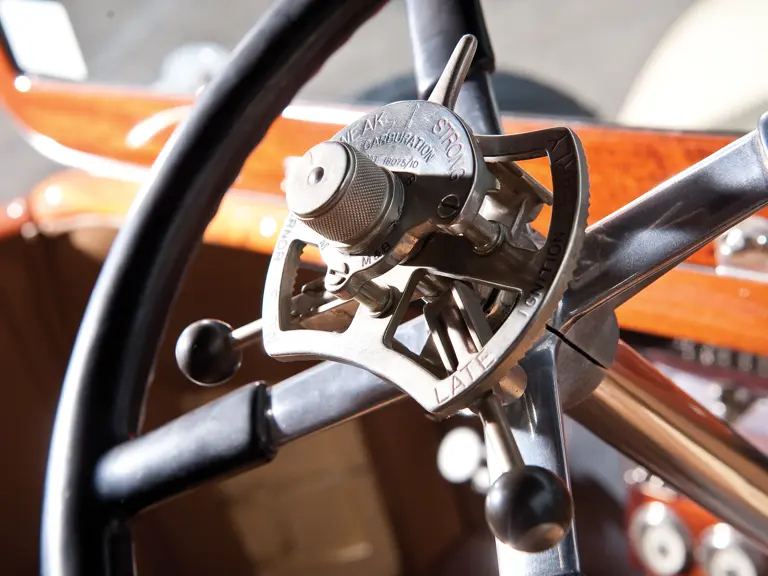

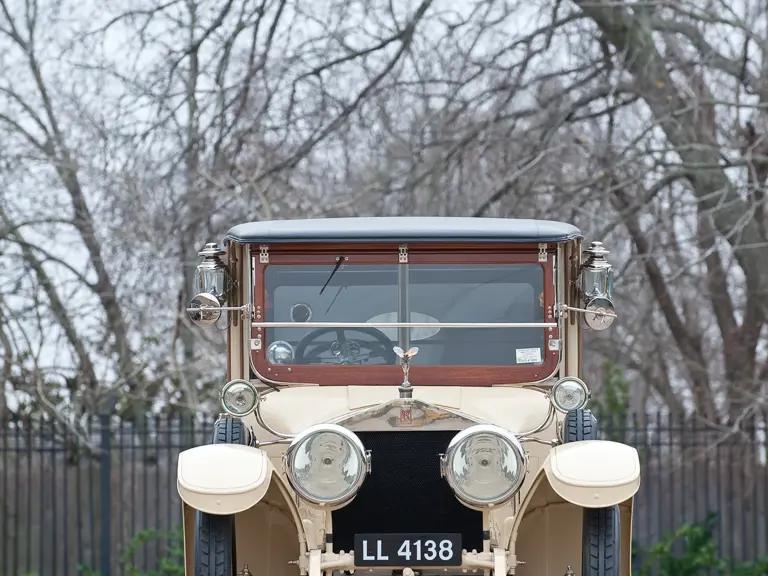
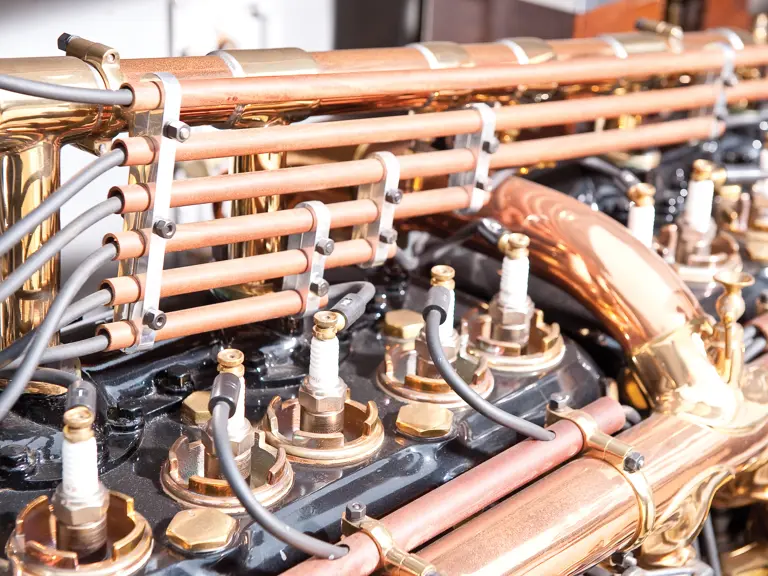

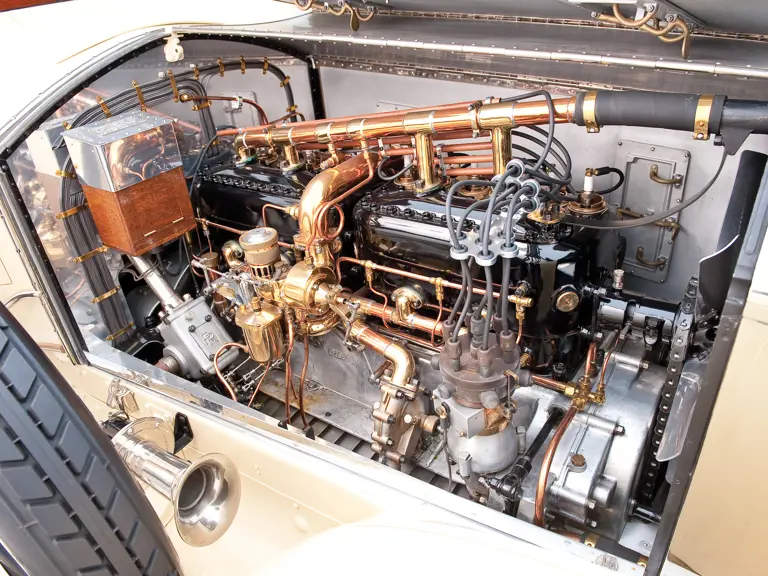
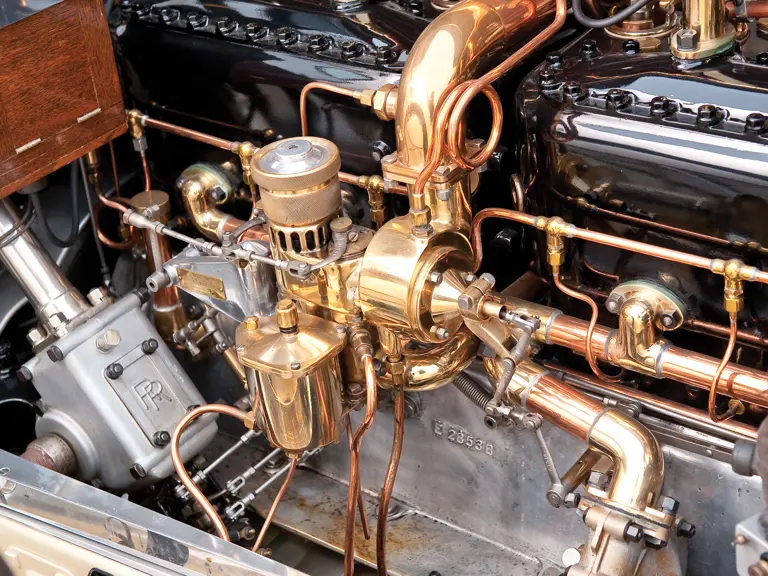

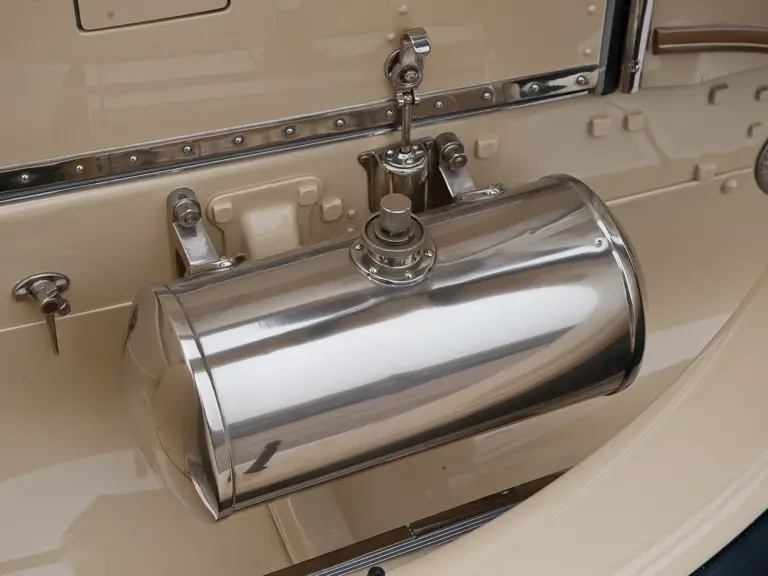

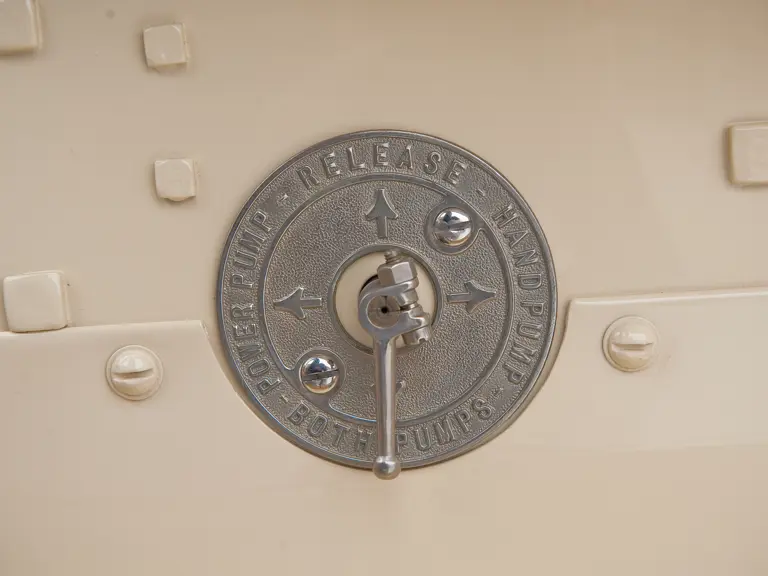

 | Phoenix, Arizona
| Phoenix, Arizona
